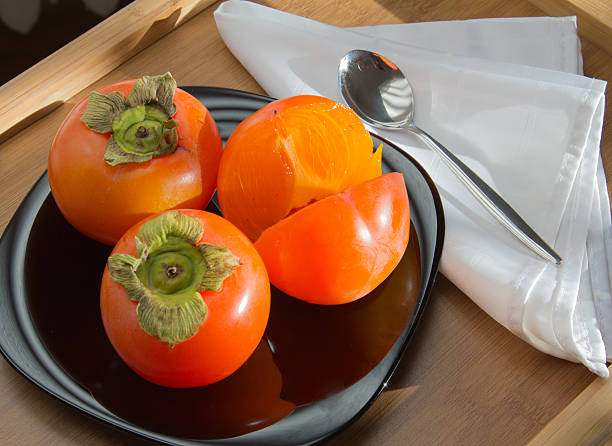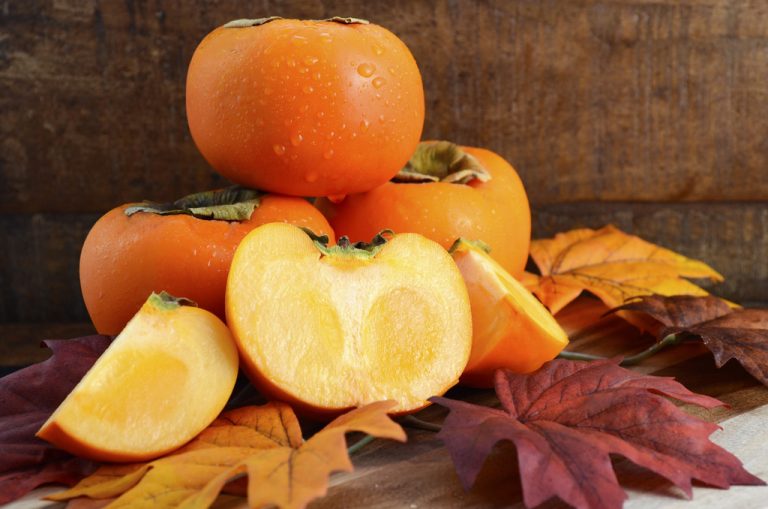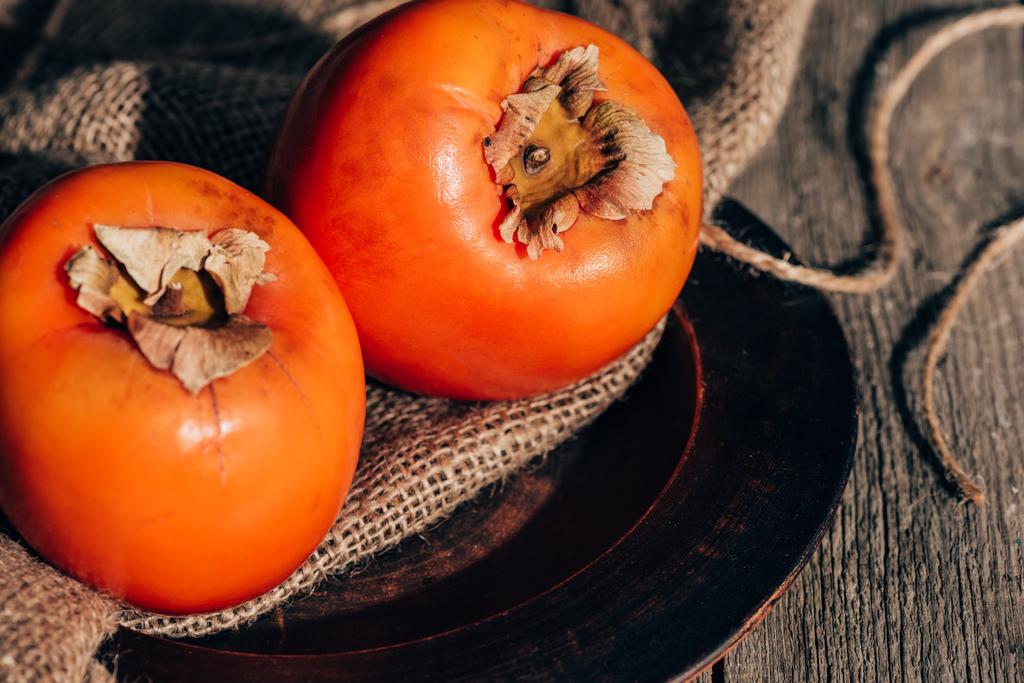The persimmon is a breed from the persimmon. Here you can find out how the two fruits differ and how sustainable the persimmon is compared to the persimmon.
The persimmon is basically a persimmon fruit. The Spanish variety Rojo Brilliante is sold under the name Persimone or the brand name Persimon. Originally, the persimmon was created in the Valencia area through a natural crossing of local persimmon varieties. This resulted in some differences to the original kaki. However, both fruits still have a lot in common.
Both persimmon and persimmon are characterized by an intense color. Their orange flesh is a bright splash of color in desserts or salads. The nutrient-rich pulp of both varieties is a healthy addition in winter. As with the persimmon, the flesh of the persimmon is soft and sweet. This probably earned the kaki fruit the name “fruit of the gods”.
The persimmon differs from the persimmon

Despite the similarities, the persimmon also differs from the persimmon. Through further breeding, she received some new characteristics:
The shape: You can recognize the persimmon by its slightly elongated shape. The persimmon, on the other hand, is rather stocky and round.
The skin: While the skin of the persimmon is hard, you can eat it with the persimmon. You can bite into a persimmon like you would into an apple.
Tannic acid: With persimmons, you don’t have to wait until the fruit is almost overripe. Even the firm flesh of the persimmon is edible without any problems. The persimmon, on the other hand, has to be fully ripe and soft before you can eat it. A persimmon that is not yet (over)ripe leaves an unpleasant, furry feeling in the mouth. This comes from the contained tannins, the tannic acid. These plant substances literally pull your oral mucosa together: they astringent. In the case of persimmon, this astringent effect has been bred away. The proportion of tannic acid in the fruit is correspondingly lower.
Persimmon: The fruit is so healthy
Persimmon is not lacking in healthy nutrients either. It is in no way inferior to kaki. The consumer window Hessen lists the following ingredients, among others:
Beta-Carotene: Similar to carrots, persimmon’s orange color indicates that the fruit contains the pro-vitamin A. Vitamin A is then formed from this in the body. This vitamin is important for cell protection as well as for mucous membranes and eyes.
Vitamin E: Vitamins from the E group have an antioxidant effect. They protect the blood vessels and strengthen the immune system.
Vitamin K: This vitamin is necessary for blood clotting to function. Vitamin K also promotes bone formation.
Vitamin C: Although the persimmon contains vitamin C, it is not a vitamin C bomb. According to the Hessian consumer information, the content is about 16 milligrams per 100 grams. For comparison: the same amount of oranges comes to 50 milligrams.
Vitamins E and K and pro-vitamin A are fat-soluble vitamins. Therefore, your body can process the vitamins better in combination with some fat. For example, add cream quark to a fruit salad or drizzle some linseed oil over your fruit dessert.
The nutritional information from the breeders’ association adds:
Minerals and trace elements such as iron, manganese and potassium.
Sugar: According to the growers association, 100 grams of fruit contain 14.1 grams of sugar. The consumer window Hessen explains that due to the sugar content, the calorie content of 70 kcal per 100 grams of fruit is quite high for all persimmon varieties. The sugar is composed of glucose and fructose, the glucose-fructose ratio is 0.9:1. With this value, the fruit should be better tolerated in the case of fructose intolerance.
Conclusion: how sustainable is the persimmon?
Regionality
The persimmon ripens in southern Europe between October and January. During this time it also comes onto the market in Germany. Conventional persimmons usually also come from Spain or Italy in winter. Off-season, however, they sometimes travel halfway around the world before arriving in Germany. They then come from China, Australia or South Africa.
If possible, only add persimmon or persimmon to your diet in winter. At this time of the year, the fruits have a shorter transport route behind them, provided they come from Germany. This improves their CO2 backpack in contrast to persimmons in summer.
Organic quality
When shopping, pay attention to organic quality. With this careful cultivation, the fruits do not come into contact with pesticides, especially shortly before harvest or transport. This is important with the persimmon because you can eat the skin. In organic markets, for example, you can find persimmons on the fruit shelf during the winter months. At Quiero Naranjas, for example, there are persimmons with the EU organic seal.
Origin

With fruits with the registered trade name Persimon, you can be sure that they come from Spain. They usually bear the designation of origin “Ribera del Xúquer”. That’s the name of the river that flows through the vineyards near Valencia. According to the EU directive, the registered designation of origin protects agricultural products for the respective area – similar to mineral water or Greek olive oil.
According to information from the growers’ association, the river is a major source of water for the persimmon plantations around Valencia. The association describes the region as one of the most fertile agricultural areas in Spain. The information does not indicate whether additional irrigation systems are necessary.
All this does not make the persimmon a really sustainable fruit from regional cultivation. However, another argument in favor of the persimmon is that it is a good source of vitamins in winter. In central European latitudes, fresh local fruit is scarce in the winter months. For example, you can use stored apples or pears, regional winter apple varieties, as well as preserved compotes such as plum compote or quince compote. In summer and autumn, on the other hand, you have a wider selection of regional fruit. You can find out what’s in season in Germany when in the Utopia season calendar.












